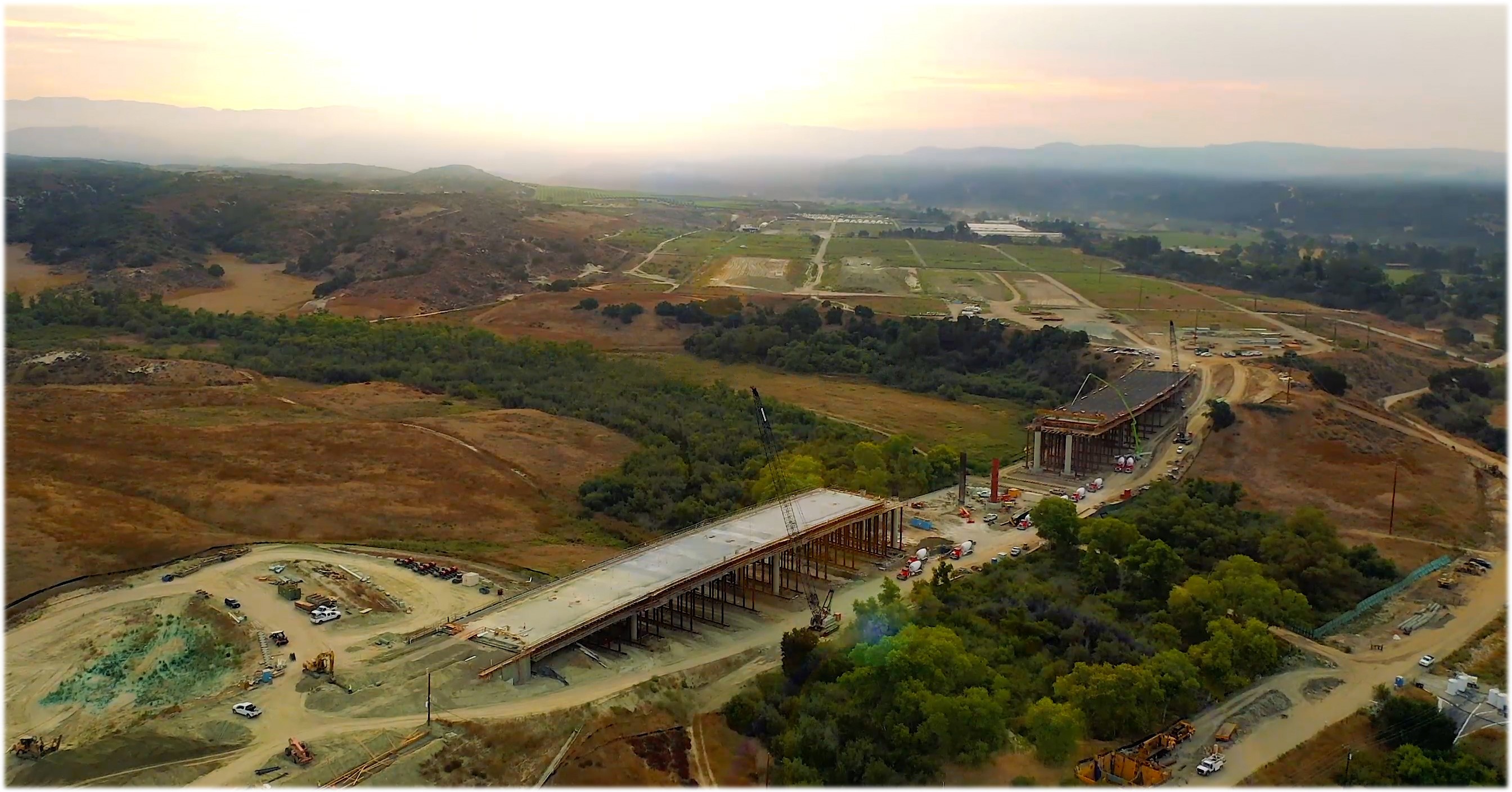Cow Camp Road Bridge over Gobernadora Canyon
Award
Bridge Project
Description
Cow Camp Road is a new four-lane arterial roadway located east of San Juan Capistrano. It serves as a vital east–west link between Antonio Parkway and Ortega Highway, providing access and all backbone infrastructure to a new development of the Rancho Mission Viejo property where 14,000 homes are planned along with 5.2 million square feet of non-residential uses over 6,000 acres.
The Cow Camp Road Bridge over Gobernadora Canyon is 1,340-feet-long and 79-feet-wide and accommodates vehicle, pedestrian and bicycle traffic over a 60-foot-deep natural canyon and major regional drainage facility. When construction is complete, this will be one of the largest bridges in Orange County. Critical infrastructure utilities, including water, electrical, gas and communications are supported within the structure, providing connections to various phases of the new development. This massive, yet elegant, structure is constructed of post-tensioned concrete supported on seven-foot diameter columns and 12-foot diameter shaft foundations in the canyon to a depth of 130 feet.
The multi-discipline project team worked closely with Rancho Mission Viejo (RMV) to gain concurrence from numerous public agencies during the planning, engineering and construction phases of Cow Camp Road over the last seven years.
Flooding, High Ground Water and Scour | Gobernadora Canyon is a major drainage area subject to major flood flows and potential scour of bridge foundations. This threat was mitigated with deep, large diameter drilled shaft foundations for the bridge within the canyon to accommodate scour depths of 12 feet.
Local Seismicity and Geotechnical Concerns | Unique site geotechnical conditions included high seismicity, lateral soil spreading, liquefaction and high ground water. The team worked together to address these issues by coordinating with Caltrans, the County of Orange and TCA to address the latest requirements of all seismic design criteria, including checks proving the structure remains elastic (undamaged) during lower level earthquakes.
Innovation | In the spirit of improving upon similar bridge designs in the area, the project team invested a significant amount of time and research investigating the hinge details normally associated with concrete bridges longer than 700 feet. The team’s research and design calculations indicated that this hinge could be avoided by constructing the bridge in three stages, prestressing the bridge at each stage and using closure pours with special detailing to complete the full length of the structure. This phased approach eliminated the need to use the expensive hinge detail, which will ultimately provide a structure that will be more predictable during lateral seismic movements. These detail refinements resulted in $1.5 million in cost savings.
Branch
